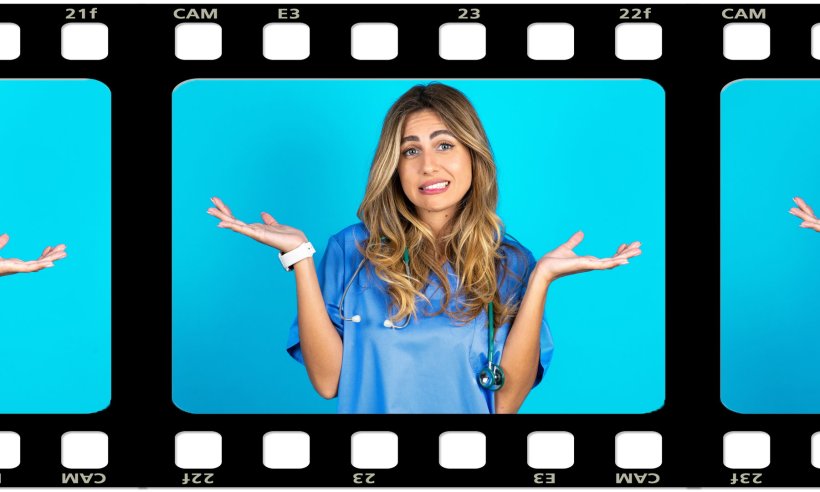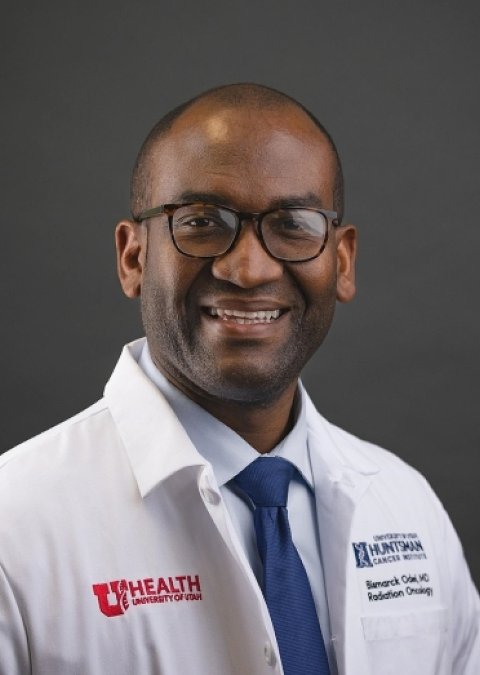
Image sources: Adobe Stock/Jihan (doctor); Adobe Stock/Instantly (movie reel)
News • Diversity in medicine
Breaking down the bias: how women in medicine are portrayed in films
Just like in the movies? Not quite: New research explores how gender, race, ethicity and age of actors correspond with medical professionals in the real world.
In the 2009 film "Gifted Hands," based on a true story, the audience follows Black neurosurgeon Dr. Ben Carson as he successfully performs three risky surgeries, earning praise from the media and medical community. This movie was not only a hit with critics and audiences, but it also inspired Bismarck Christian Odei, MD, an assistant professor in radiation oncology at Huntsman Cancer Institute at the University of Utah, to follow his passion.

Image source: Huntsman Cancer Institute at the University of Utah
“Seeing a physician who looked like me, portrayed positively and successfully on screen, was both inspiring and transformative for me,” says Odei. “On a larger scale, seeing a diverse demographic of physicians in the media can influence the public and beckon a wider group of the rising generation towards medicine.”
Odei is now a prostate cancer specialist and he continues to advocate for diversity in medicine. This passion pushed him to lead a team of researchers to investigate the representation of women in medicine in films. Recently published in JAMA Internal Medicine, a study used IMDB.com to look at movies from 1990–2020 that referenced physicians in their plot summaries, keywords, and credits. The team tallied the gender of the characters who were physicians, as well as the race, ethnicity, and age of the character.
Out of the 1,226 movies with 2,295 characters that were physicians, only 18% were women, while 81.4% were men. While the percentage of women physicians portrayed in films increased per decade (about 2% every 10 years), most physicians in movies are men. When in reality, these numbers are much different.
When someone falls outside the boundaries of these stereotypical portrayals of physicians, they may feel out of place and wonder if they belong
Bismarck Christian Odei
About 36% of practicing physicians are women and approximately half of all current medical students are reported as women, signaling equal proportions of men and women physicians in the coming years. Women have been historically underrepresented in professional roles in movies, continuing to perpetuate gender biases.
In addition, the study found that there is even less portrayal of physicians in historically underrepresented groups in cinema. These results help paint a picture of why some people may feel out of place as physicians, a phenomenon known as imposter syndrome. “There are stereotypical views of what a physician is supposed to look like due to historical reasons and the messaging surrounding these realities,” says Odei. “When someone falls outside the boundaries of these stereotypical portrayals of physicians, they may feel out of place and wonder if they belong.”
This research also showed that among G and PG movies, only 21% of the 2,295 movies portrayed at least one woman physician. Those watching these movies, typically younger and more impressionable viewers, rarely see women as physicians.
The portrayal of women in medicine in films is important as it not only reflects the perception of women in society, but also helps shape attitudes in future generations, according to Odei. “We felt that most movies could still maintain the integrity of the plot and scenes if female physicians were substituted in for their male counterparts,” says Odei. “This further underscores the crucial role of screenwriters in enhancing the portrayal of women in film.” Seeing women positively portrayed as physicians will help normalize these roles for future generations of budding scientists interested in medicine as a career and for those who are seeking treatment as a patient, he says.
“In medicine, having patients have a sense of confidence in a competent physician, is critical. This is particularly true in oncology when we are often dealing with a life and death-situation,” says Odei. “You want the patient to feel that they are in safe hands. So, their perception of what safe hands look like is critical. For these reasons, we cannot undermine the value of the media in framing expectations. For patients at the Huntsman Cancer Institute, it is important that they come in and feel comfortable with the diverse array of physicians who will be attending to them.”
Odei and his team hope to continue researching the impact of media representation of physicians on patients, and also capture how other underrepresented subgroups are being portrayed in the media. Additionally, they hope to expand their research to examine representation within other popular media types.
Source: Huntsman Cancer Institute at the University of Utah
28.10.2023











